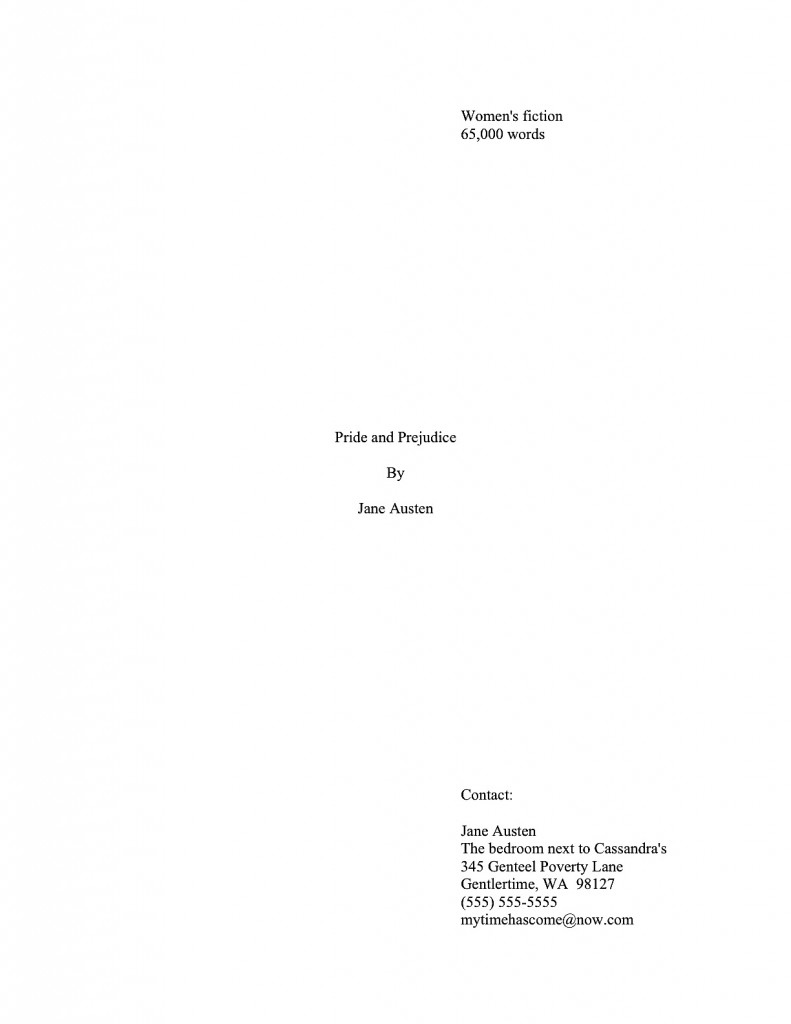
I had planned to move away from practical marketing issues today, campers, and back to the nitty-gritty craft issues that we all so love. After a quick barefoot run through some of your comments in the earlier ‘Palooza series, I realized with the proverbial shock that I had entirely forgotten that I had promised another: a how-to on how to come up with a list of agents to query.
That would render all of those beautifully-written queries quite a bit more useful, wouldn’t it? I was stunned to discover that I hadn’t done an in-depth series on generating a query list since 2007. (How time flies when we’re talking craft, eh?) And there’s no time to lose if I’m going to ‘Palooza on the subject this fall, because savvy queriers aiming for the New York-based agency market will, naturally, be aiming to get the rest of the season’s queries out before Thanksgiving week.
That’s the fourth Thursday in November, for those of you reading this in foreign climes. Try to crank those queries out before then. It’s even a good time to send out a few additional queries for those of you already on the query-a-week plan.
Why treat this as a general querying deadline for the year, you ask? Well, not a lot goes on in the U.S. publishing industry between Thanksgiving and Christmas; I know many, many agents who, as in August, simply do not bother to send submissions to editors between mid-November and the New Year.
It’s a time for merrymaking — and for catching up on all of that reading that’s been piling up over the preceding 10 1/2 months. Given that the average agent’s office is well enough insulated with as yet unread piles of paper to allow him to survive the next ice age in toasty comfort, the comparatively great time to read is universally regarded as a boon.
What does that mean from the aspiring writer’s perspective? Chances are good that a query or a manuscript sent during these yearly doldrums would languish unopened for a month — or more.
Why more? A couple of reasons. By law, US-based agencies have to produce tax information for the previous year’s earnings by the end of January: paperwork central. And since agenting tends to attract former English majors, rather than accounting majors, this deadline can result in a few weeks of rather frayed tempers.
Which tend to be exacerbated by the positive avalanche of queries they receive within the first couple of weeks of the new year. It’s not uncommon for Millicent to greet a gray January morning by seeing 4 or 5 times the usual volume of mail dumped upon her desk.
That’s enough to make anyone burn her lip with a too-hasty sip on her latte.
Does Santa Claus bank down the reindeer engines from his Yuletide travels by bringing good little agency screeners buckets of additional queries? No, it’s a phenomenon of group think: virtually all of the aspiring writers of North America make it their New Year’s resolution to query the heck out of their books.
The result: the first few weeks of January finds Millicent the agency screener overwhelmed, her bosses stressed, and everyone concerned in an even more rejection-happy mood than usual.
I know; hard to picture. But true. I always advise my clients to avoid querying, or even submitting requested material, before Martin Luther King, Jr. Day — or, to translate that into European terms, before Federico Fellini’s birthday on January 21.
Hey, if we’re taking nominations for a patron saint of aspiring writers, Fellini isn’t a bad choice. An enhanced appreciation of the surreal, the advent of the miraculous in modern life, and the value of sitting around in cafés, brooding and looking fabulous, is actually very helpful for those of us trudging the long path to publication.
So let’s talk hunting and gathering. Specifically, hunting down names of agents who might be interested in your work and gathering that information into a list that will carry even the most intrepid querier through the end of the year. Or at least until Thanksgiving.
But where, as writers everywhere routinely cry to the heavens, does one FIND agents to query? Opening the Manhattan Yellow Pages and sticking a pin randomly on the page? Tracking down the four biggest agencies and querying every agent in them? Just querying every name listed in the Herman Guide?
The short answer, of course, is no. (The long answer is NOOOOOOOO.)
Bear with me, long-time readers, while I repeat an underappreciated truth of the industry: not every agent represents every kind of book, or even every stripe of book within a particular genre.
Instead, agents specialize; they nurture connections primarily in their areas of interest. And they uniformly tell their screeners — our old friend Millicent and her ilk — to reject outright any query that falls outside those parameters.
Yes, you read that correctly: agencies typically reject ANY query about a book category they do not represent, regardless of quality. Even if it’s the most marketable idea for a book since Helen Fielding said, “You know, I think I’m gonna rewrite Pride and Prejudice in a modern setting, with more sex.” This is the primary reason that agents prefer queries to state the book category in the first paragraph, if not the first line: so they may weed out the kinds of books they have no experience representing.
Ready for another hard, oft-overlooked truth? It is simply a waste of an aspiring writer’s time, energy, and resources to send a query to an agent who does not specialize in that writer’s type of book. No matter how well-written a query may be or how inherently marketable a book concept is, it is futile to query an agent who has devoted her life to promoting bodice-ripper romances with a futuristic fantasy where bosoms remain unheaved, and vice versa.
Oh, the misery that would be averted if more aspiring writers were aware of this salient fact! Every year, hundreds of thousands of hours are wasted in both writing misdirected query letters and summarily rejecting them, causing needless depression on one end and habitual chagrin on the other. Although, really, Millicent should be grateful that so many aspiring writers make this mistake: queries sent to the wrong agent are self-rejecting, after all.
To heighten the wails of woe even further, it isn’t even enough for a writer to target an agency that represents his kind of book: he needs to target the right agent within it. One of the classic agency screener pet peeves is to see the same query letter sent simultaneously to every agent on staff at a particular agency a query in the hope of hitting the right one.
To all too many queriers, the necessity to do some homework on who represents what comes as a gargantuan surprise — and an annoying inconvenience. After all, it just seems efficient to write to every member agent listed under an agency’s listing. “Who’s going to know there’s overlap?” these busy souls mutter to themselves, industriously stuffing envelopes. “The average agency receives 800-1500 queries per week!”
Actually, it’s fairly likely that someone will notice: Millicent is often opening the mail for more than one agent. And although I hate to be the one to break it to you, but the vast majority multi-member agencies have a policy that they will reject such blanket queries outright.
Not that an agency will usually tell writers that they’re being rejected for this reason, mind you; blanket queriers almost invariably get the same form-letter rejection as everyone else. Which is why, in case you were wondering, there are invariably so many blankly dismayed faces in the audience after an agent casually mentions from a conference podium that he and his colleagues won’t even consider a project proposed to everyone in the agency simultaneously.
Before anyone jumps to any conclusions: this pervasive practice of rejecting multiple queries to the same agency is often mistakenly confused with the writers’ conference circuit myth that agents uniformly become incensed if they learn that a particular writer is sending out queries to agents at different agencies simultaneously. The former is a common pet peeve; the latter is most emphatically not. To drag out my broken record player yet again:
 Unless an agency states SPECIFICALLY in its agency guide listing or on its website that it insists upon an exclusive for any submission it considers, these days, it is assumed that a market-savvy writer will be sending out simultaneous queries.
Unless an agency states SPECIFICALLY in its agency guide listing or on its website that it insists upon an exclusive for any submission it considers, these days, it is assumed that a market-savvy writer will be sending out simultaneous queries.
Why would they presume any such thing? For one very simple, very practical reason: querying agents one at a time, waiting weeks (or even months) to hear back from one before sending out the next, can add YEARS to the agent-finding process.
Trust me, agents understand this. They tend to be impatient people by nature.
So why would they find a writer’s querying every agent in a particular agency simultaneously annoying? To insider eyes, it’s a sign of inexperience, an indicator that the querier has not sufficiently researched who represents books in a given category sufficiently — and is thus unlikely to be a very industry-savvy client.
Why? Chant it with me now, ‘Palooza followers: writers who don’t do their homework are likely to need more of the process explained to them, and are thus significantly more time-consuming to represent than those who already know how the process works. (Than, say, aspiring writers who had invested the time in reading through the posts in the HOW THE PUBLISHING INDUSTRY WORKS — AND DOESN’T category on the archive list at right. Conveniently placed, is it not?)
Realistically, there is another, more practical reason for the one-agent-per-agency policy: if 5 of the 150 envelopes Millicent slits open tomorrow morning have the same name on the letterhead, or sport the same title in the first paragraph, she can save many valuable minutes by rejecting #2-#5 as soon as she spots the repetition.
And she may not even get as far as the first paragraph of an e-mailed query that lists half a dozen agents on its recipient list.
Do I hear some disgruntled murmuring out there? “But Anne,” I hear some of you cry, “that isn’t fair! How on earth is a writer new to the industry to learn who represents what?”
Glad you asked, disgruntled mutterers. My project for the rest of the week shall be to answer this question.
Yes, readers who have had your hands in the air since the beginning of this post? “I know how to solve this one, Anne!” you announce proudly. “I would go to one of the many online agent search engines, plug in my book’s category, and query everyone whose name comes up!”
Well, yes, you could do that, proud hand-raisers. You could also pick up one of the standard agency guides, turn to the index, and see who is listed as representing your book category. Either would be a terrific first step toward generating a query list.
Yes, I did say first step, now that you mention it. Neither method is likely to give you the information you need in order to prioritize which agents you should query first. That’s problematic, as it tends to prompt writers brand-new to the querying process to produce a single generic query letter to send to all 50 — or 70, or 212, depending upon the popularity of one’s chosen book category — who are listed as being interested in their type of book.
Three months later, they find themselves saddled with 21 rejections, 29 non-responses, and a query list with no more names on it. Since one of the unspoken-but-universal expectations of agency life is that a writer may query a particular agent only once with the same project, where is the disappointed mass-querier to turn next?
Hold that horrifying thought, please. I have another few species of query-list nightmares with which to frighten you.
Some aspiring writers query only one agent at a time — so by the time they hear back (or not) from the first ten, the information upon which they based their initial agent-ranking preferences may have become obsolete. This can happen for a lot of reasons: the market for in a particular book category may have changed; individual agents may have changed what they are looking to represent; editors who had bought reliably an agency in the past may have been laid off. Then, too, agents move from agency to agency all the time, not to mention taking maternity leave, getting fed up with a difficult literary market, or even dying.
Oh, you may laugh, but do you really want to be the writer who queries the agent who died six months ago? To be useful over years of querying, a query list should be updated and its facts rechecked about twice a year.
Is all of that groaning I hear coming from those of you who had been querying one or two agents at a time? “But Anne,” you protest, and who could blame you? “I’ve been querying slowly because I didn’t have the time to do extensive research on many agents at once! I have a general list, of course, but I only look up the person I am planning to query next. Are you saying that I also need to check that general list that I gleaned from the index of Guide to Literary Agents three years ago, to check that the agents on it represent what they did back then?”
In a word, yes. (In several words: yes yes yes yes yes.) Agencies are very fluid places these days.
But let’s pause a moment to consider this practice of querying one agent and waiting to hear back before moving on to the next. If you’re intending to approach agencies with a we-will-only-respond-if-we-are-interested policy (sometimes stated openly on agency websites and in guide listings, but not always), it’s just not realistic. Unless you have your heart set on an agency that demands an exclusive look at queries — extremely rare, by the way — it’s disrespectful to your own time not to continue to send queries out on a regular basis while you’re waiting to hear back from your first choice.
I suspect that is an argument that will resonate with some of you one-at-a-timers, not necessarily because you believe the old saw about agents’ expecting querying exclusivity (although many who embrace this practice do), but because, let’s face it, it takes a heck of a lot of work and emotional energy to send out even one query, let alone keeping six or ten out at any one time. It will probably make less sense to the ilk of one-at-a-timers who have such high expectations for their books’ prospects that they just assume that the first agent they query will snap the manuscript up immediately.
For each of these rather disparate initial rationales, the subsequent reasoning is surprisingly similar: why should I bother to send out more queries? If the first agent on my list says yes, it will just be wasted effort. And once a writer starts thinking that way, the reasoning seems just as valid for one’s 85th query as one’s second.
I understand exhaustion, hubris, or just plain lack of time, but in these days of months-long turnaround times and not hearing back at all if the answer is no, what usually ends up happening to queriers who reason this way is that they wake up one day a year into the querying process to discover that they have barely made a dent in their querying lists — and thus have to research them all over again. Or, even more common, they simply have given up by a year into the agent search.
I’ve said it before, and I’ll send it again: because the object here is not to land just any agent, but the right one for a specific book, even the most talented writers often have to send out dozens or even hundreds of queries before finding the right one. It honestly is in your manuscript’s best interest, then, to keep pressing forward. The only book that has NO chance of getting published is the one that no agent or editor ever sees.
You’re going to want to keep sending out those queries. Yes, even if the best agent in the known universe has the full manuscript of your novel sitting on her desk even as I write this.
Was that loud crash a multitude of jaws hitting floors across the English-speaking world? Believe me, you will be a much, much happier camper if you already have queries, or even submissions, in other agents’ hands if — heaven forfend — the one who asked to see a partial or full turns you down.
Think of keeping the query flow going as insurance: if something goes wrong with your top prospect, you will have possible alternates waiting in the wings. Or at the very least will be spared the effort of having to come up with a new prospect from scratch. Besides, contrary to pervasive belief amongst aspiring writers, being sought-after by more than one agent is a GOOD thing — after all, nothing speeds up reading turn-around like the news that another agent has already made an offer.
I know it’s tempting to rest on your laurels while waiting to hear back on a partial or a full, but The law of inertia tells us that a process already in motion tends to remain in motion; as anyone who has done serious time in the querying trenches can tell you, it takes quite a bit more energy to restart your querying engines again after they have gone cold than to keep plowing forward.
I know you’re tired of querying; it’s a whole lot of work. You have my sympathy, really. Now go out and send a couple of fresh queries this week. And next, and the week after that. Repeat until you’re picked up — although if you wanted to take a break between Thanksgiving and Martin Luther King, Jr., day, that might save you some effort.
As my long-time readers are well aware, I’m of the keep-querying-until-the ink-is-actually-dry-on-the-contract school of thought. But to keep that flow going, you’re going to need to generate a hefty list of prospects of agents who represent writing like yours.
And by writing like yours, I don’t mean books along vaguely similar lines — I’m talking about books in the same marketing category. Those of you who worked your way through Querypalooza should already have a fairly clear idea of which categories come closest to your work — and if you do not, please run, not walk, toward the posts under the aptly-named HOW TO FIGURE OUT YOUR BOOK’S CATEGORY listing at right.
Why is nailing down your marketing category so important? Because it is the language agents and editors use to describe books. Until you know in which category (or categories; many overlap) your baby falls, you will have great difficulty not only understanding agents express their professional preferences at conferences, but also deciphering their wants as stated in agency guides and on their websites.
As you may perhaps have gathered from how often I have said it in this post, I cannot overstress the importance of targeting only agents appropriate to your work, rather than taking a scattershot approach. (See? I even put it in boldface that time.) There’s a reason I’m hitting the point so hard: if you’ve ever heard a successful agent talk about the business for five consecutive minutes, chances are you’ve already heard four times that one of the biggest mistakes the average aspiring writer makes is to regard all agents as equally desirable, and thus equally smart to approach.
As a rule, they don’t like being treated as generic representatives of their line of work, rather than highly-focused professionals who deal in particular types of books. This is true, incidentally, even of those agents who list every type of book known to man in the agency guides, because they are loath to miss out on the next bestseller, regardless of whether they typically represent that type of book or not. Go figure.
So as those of you Querypalooza survivors may recall, the single best thing you can do to increase your chances of acceptance is to write to a specific person — and for a specific reason, which you should state in the letter. Agents all have specialties; they expect writers to be aware of them.
Later in this series, I will go into why this isn’t a particularly fair expectation, but for now, suffice it to say that it’s expected. Respecting the agents’ preferences in this respect marks the difference between the kind of writer that they take seriously and the vast majority that they don’t.
This is probably old news to most of you, right? If you’re taking the time to do research on the industry online, you have probably encountered this advice before. Although perhaps not its corollary: it’s not an efficient use of your querying energies to approach agents — at conferences, via e-mail, or through queries — unless they have a proven track record of representing your type of writing successfully.
Limiting your queries by past sales records is for your protection, as much as to increase your probability of querying success. Think about it: do you really want to be your new agent’s FIRST client in a particular genre?
Of course not; it will be twice as hard to sell your book. Just expressing interest in your type of book may not be sufficient; you want an agent who already has connections with editors who buy your type of work on a daily basis.
Which brings me to the most logical first step for seeking out agents to query.
1. Agents who attended the same conference(s) you did
If you attended a conference within the last year, now is the time to send letters to the agents to whom you were not able to pitch. However, be smart about it: don’t bother to query those who client lists do not include books like yours.
I’m serious about this. No matter how much you may have liked the agent personally at the conference: the second easiest ground of rejection — after a generic “Dear Agent” salutation — is when the query is for a kind of book that the agent does not represent. Like “Dear Agent,” an agency screener does not need to read more than a couple of lines of this type of query in order to plop it into the rejection pile.
Allow me to repeat: this is true, no matter how much you may have liked the agent when you met her, or how well you thought the two of you clicked, or that the second agent from the left on the panel bears a startling resemblance to your beloved long-ago junior high school French teacher. Deciding whom to represent is a business decision, not a sentimental one, after all — and it will save you a tremendous amount of time and chagrin if you approach selecting your querying list on the same basis.
So do a little homework first. If you didn’t take good notes at the conference about who was looking for what kind of book (and didn’t keep in touch with the person sitting next to you, scribbling like a fiend), check out the standard agents’ guides, where such information abounds. Or the agency’s website.
Then, when you find the right fits, go ahead and write the name of the conference on the outside of your query envelopes, and mention having heard the agent speak at the conference in the first line of your letter; at most agencies, this will automatically put your query into a different pile, because conference attendees are generally assumed to be more industry-savvy, and thus more likely to be querying with market-ready work, than other writers.
If you went to a big conference, this strategy might yield half a dozen more agents to query. Where do you go after that?
This is a serious question, one that I have argued long and hard should be addressed explicitly in seminars at writing conferences. Far too many aspiring writers abandon their querying quests too soon after their first conferences, assuming — wrongly — that once they have exhausted the array of attending agents, they have plumbed the depth and breadth of the industry.
This is simply not true. The agents who show up at any given conference are just that — the agents who happened to show up for that particular conference, people with individual tastes and professional preferences. If you didn’t strike lucky with that group, it doesn’t necessarily mean that you would have the same luck with another.
But obviously, conferences are expensive; few writers can afford to attend an unlimited number of them. So how else can you find out who is eager to represent what?
2. Agents who represent authors you respect within your chosen book category
The common wisdom on the subject, according to most writing guides and classes, is that you should start with the agents of writers whose work you like, advice predicated on the often untrue assumption that all of us are so myopic that we will only read writers whose work resembles ours.
Me, I’m not so egocentric: I read books by a whole lot of living writers, most of whose styles are nothing at all like mine; if I want a style like my own, I read my own work.
However, especially if you write in a genre or nonfiction, querying your favorite authors’ agents is not a bad idea. Certainly, the books already on your shelves are the easiest to check the acknowledgments page for thank-yous.
Actually, you should get into the habit of checking these pages anyway, if you are planning on a career in this business: one of the best conversation-starters you can possibly whip out is, “Oh, you worked on Author X’s work, didn’t you? I remember that she said wonderful things about you.”
Trust me, there is not an agent or editor in the business who will not be flattered by such a statement. You would be amazed at how few of the writers who approach them are even remotely familiar with the average agent’s track record. But who doesn’t like to be recognized and complimented on his work?
So, knowing this about human nature, make an educated guess: would an agent would be more or less likely to ask to see pages from a writer whose well-targeted query began, “Since you so ably represented Author X’s GREAT AMERICAN NOVEL, I believe you will be interested in my work…”
You bet your boots, baby.
So I hear some disgruntled murmuring out there? “But Anne,” I hear some of you call out, “I already knew about querying agents I saw at conferences and checking acknowledgement pages. (Which, due to the rising costs of paper and binding, aren’t nearly so common in newly-published books as they used to be in the past.) Aren’t there more creative ways to expand my query list?”
As a matter of fact, there are — but that’s a topic for next time. Hang in there, campers, and keep up the good work!
















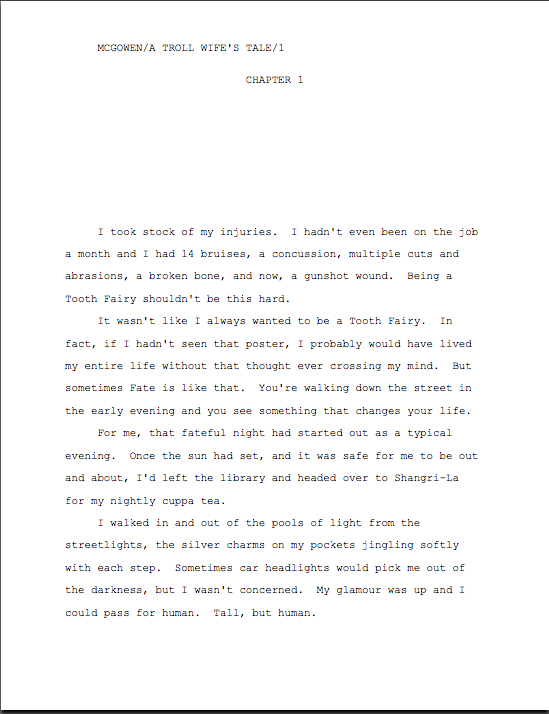
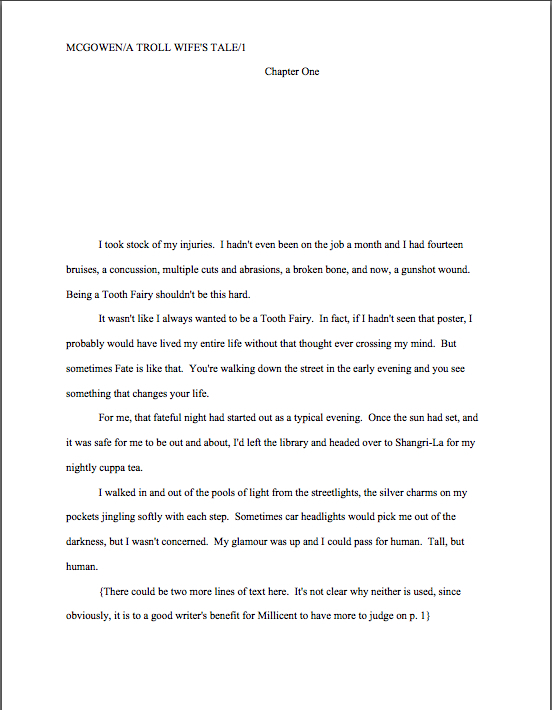
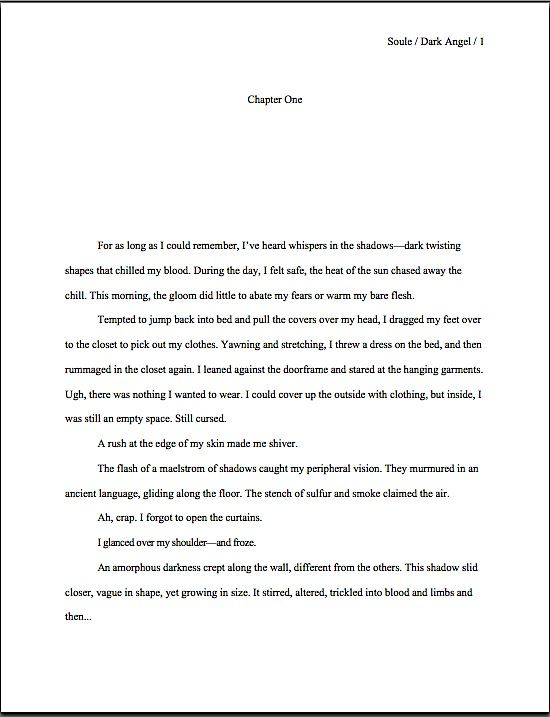
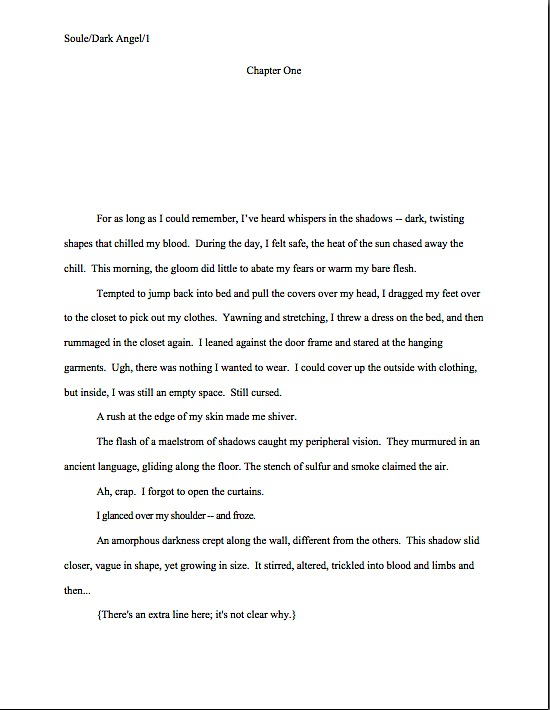

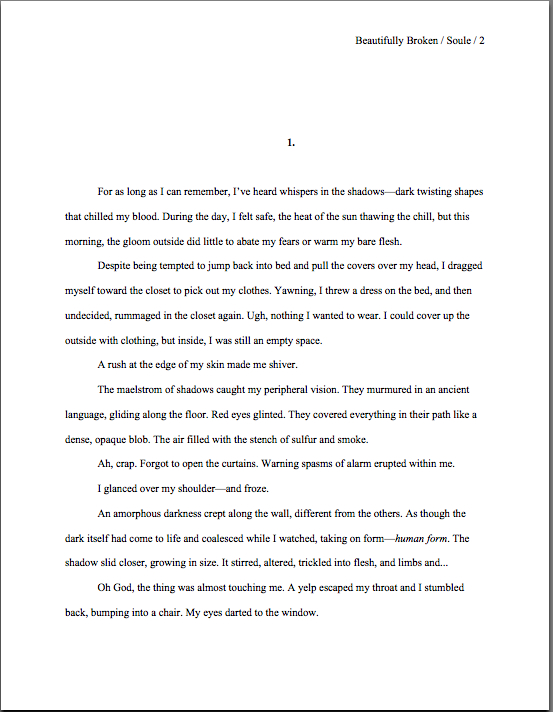
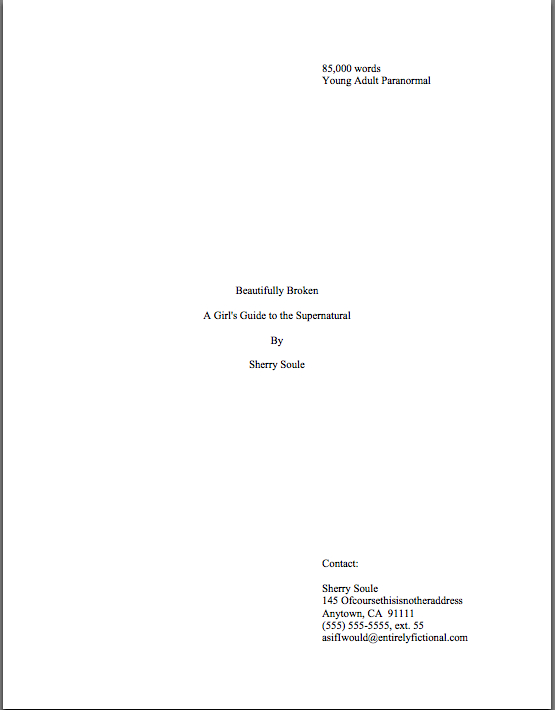
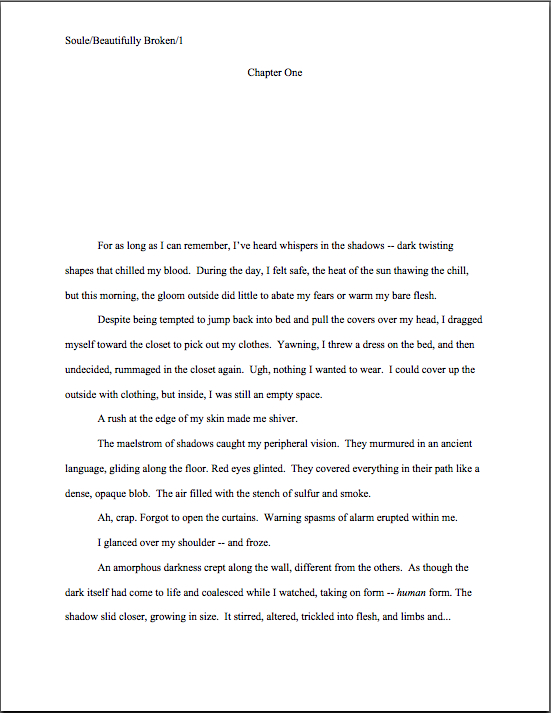
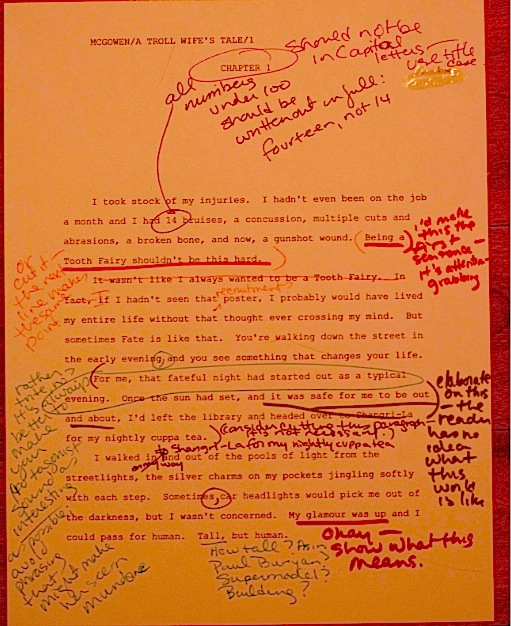




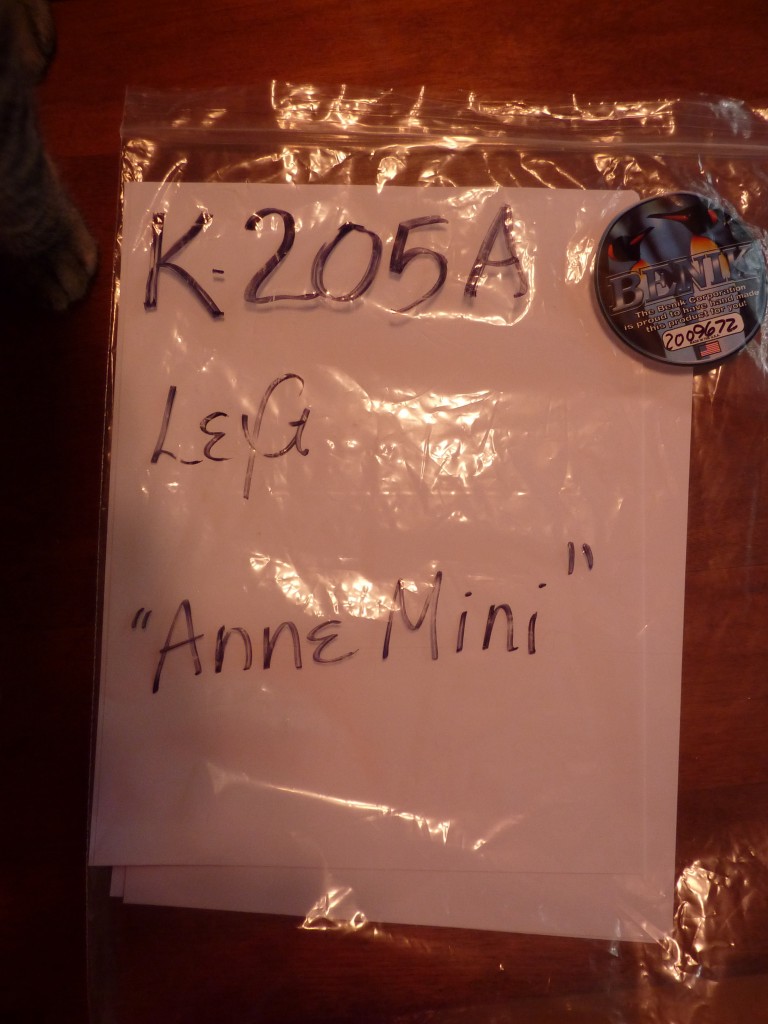
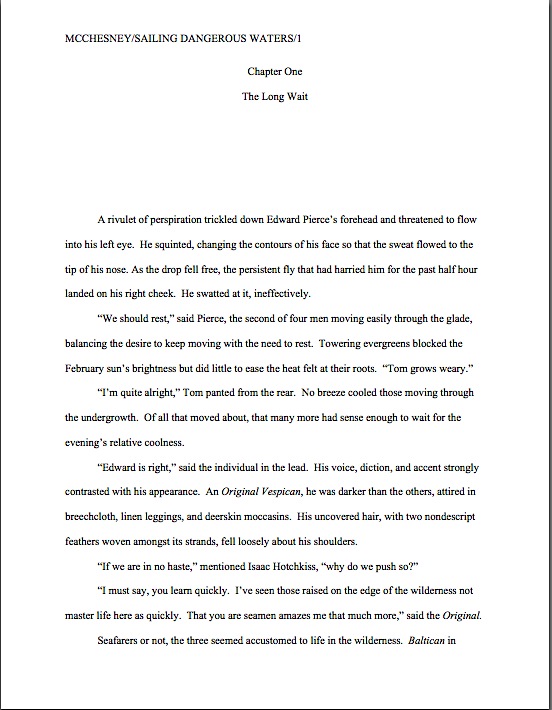

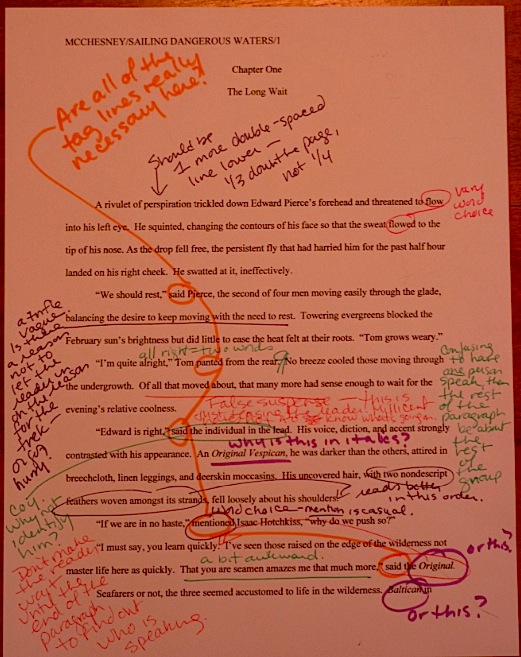
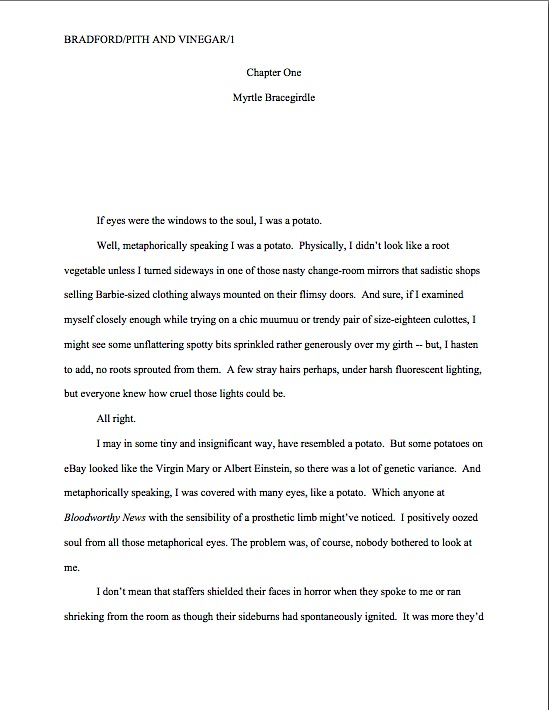
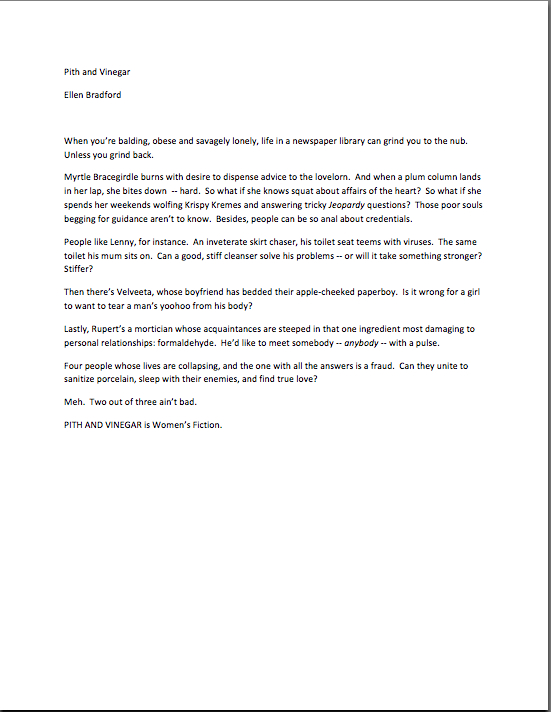
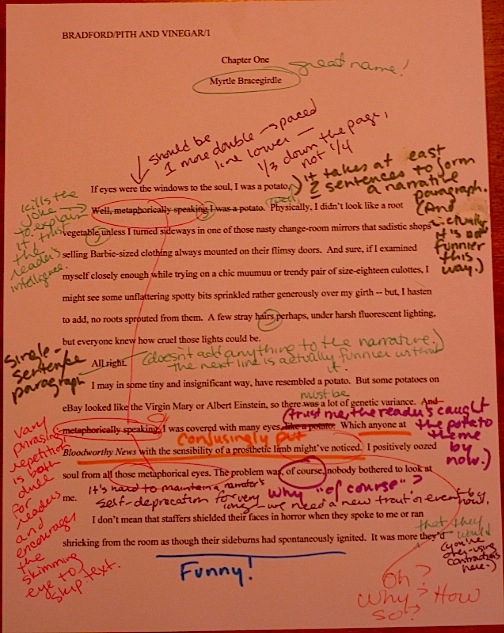


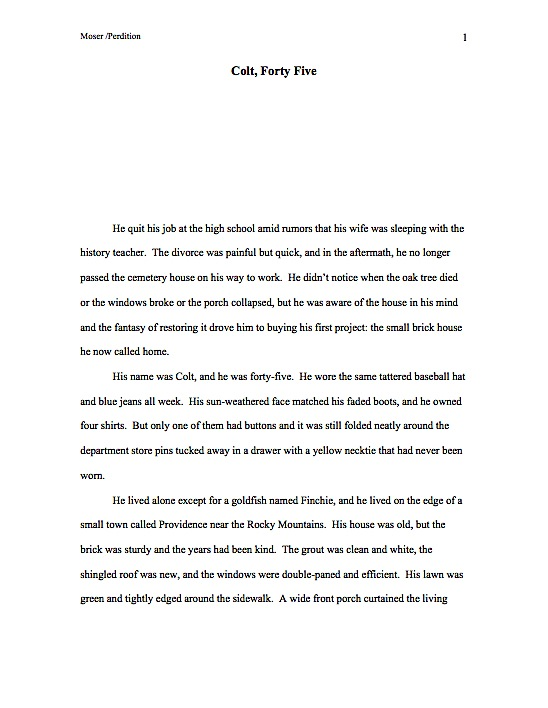

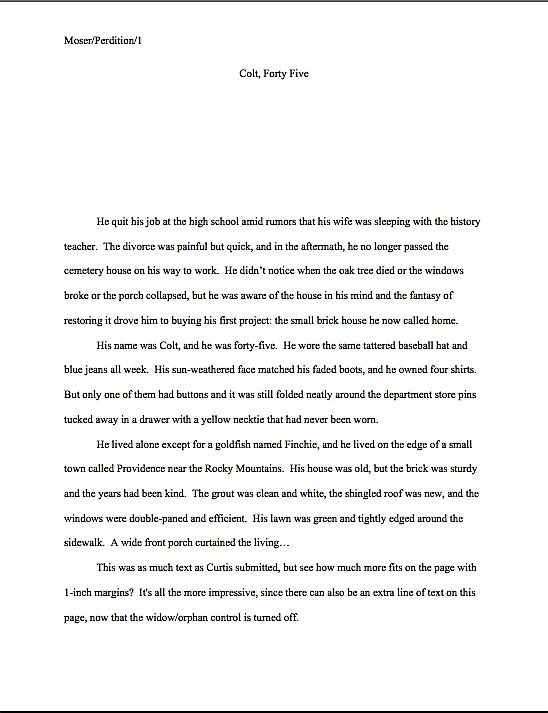


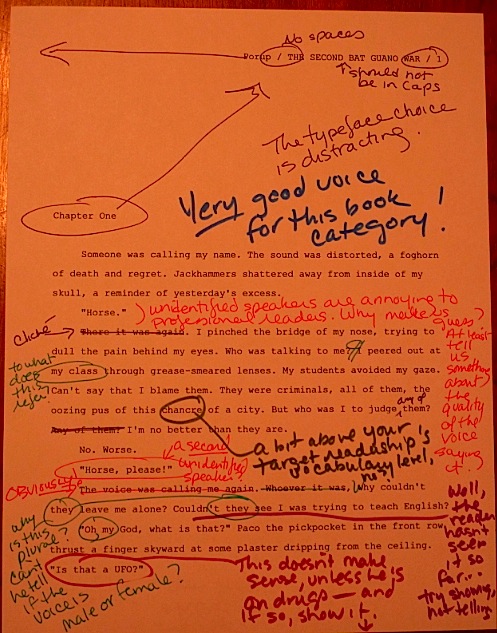

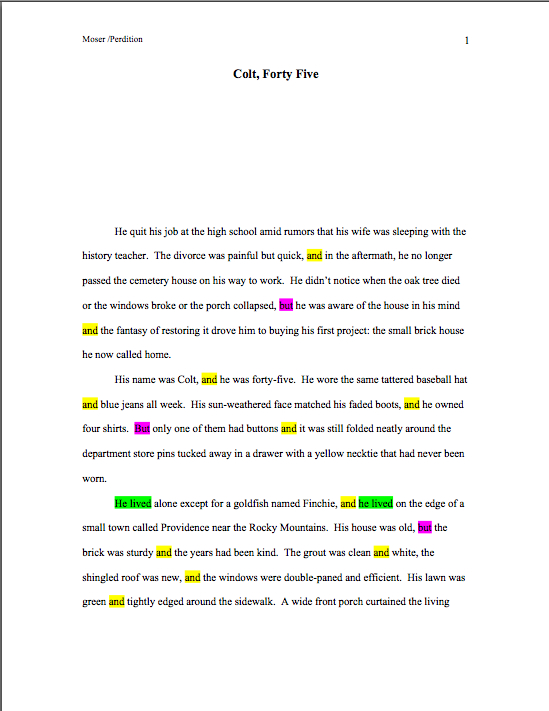


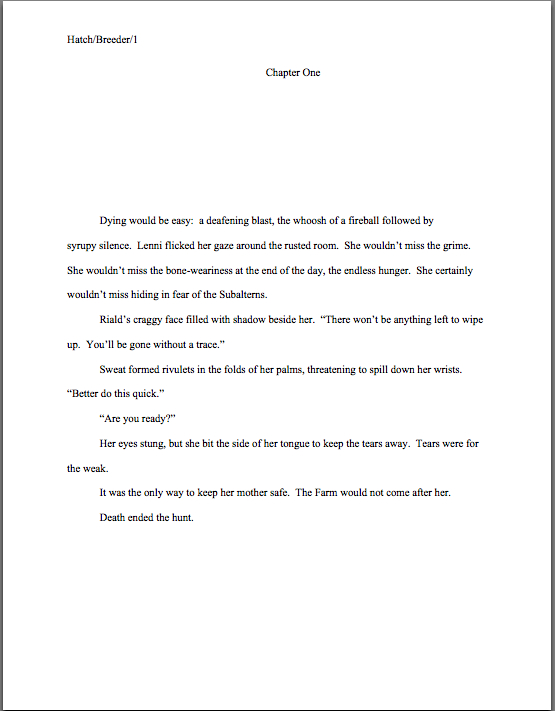
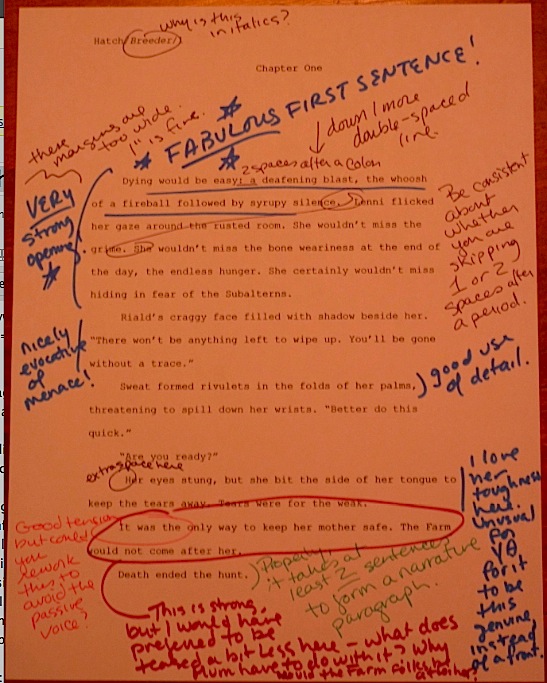


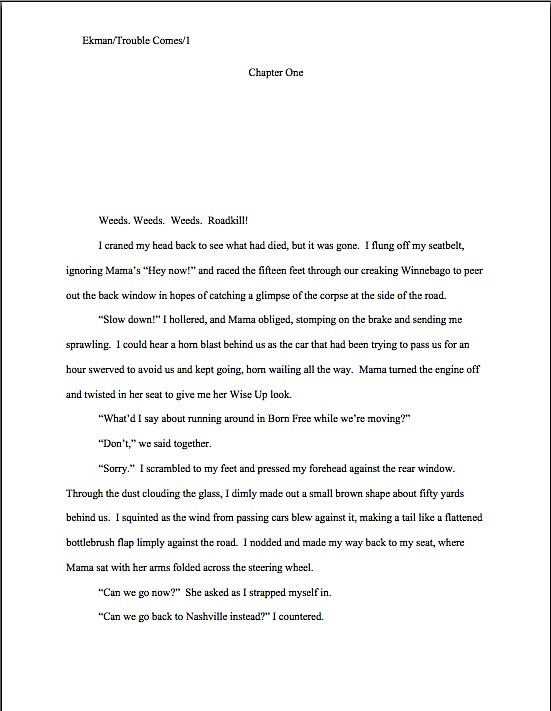
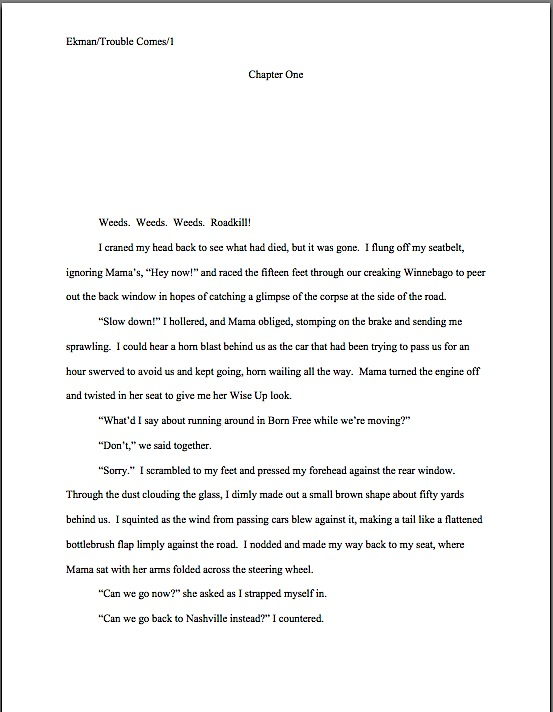
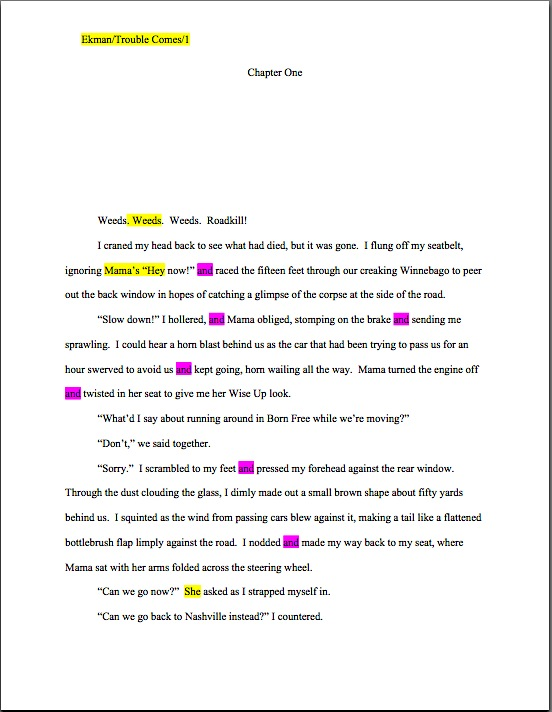


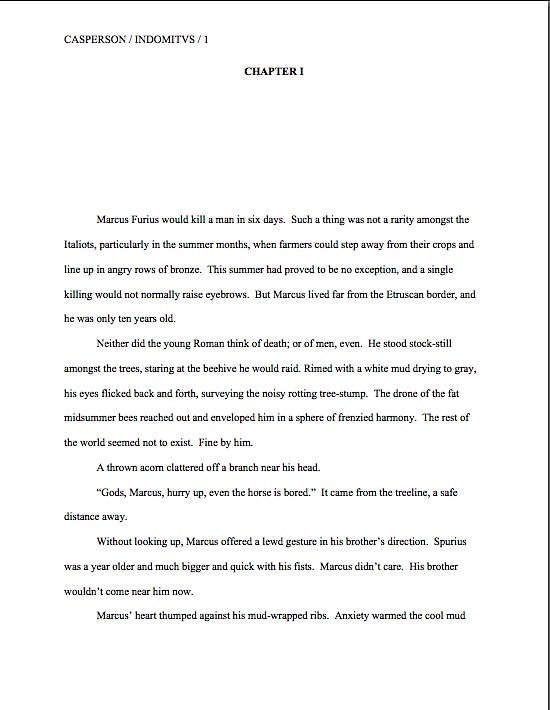
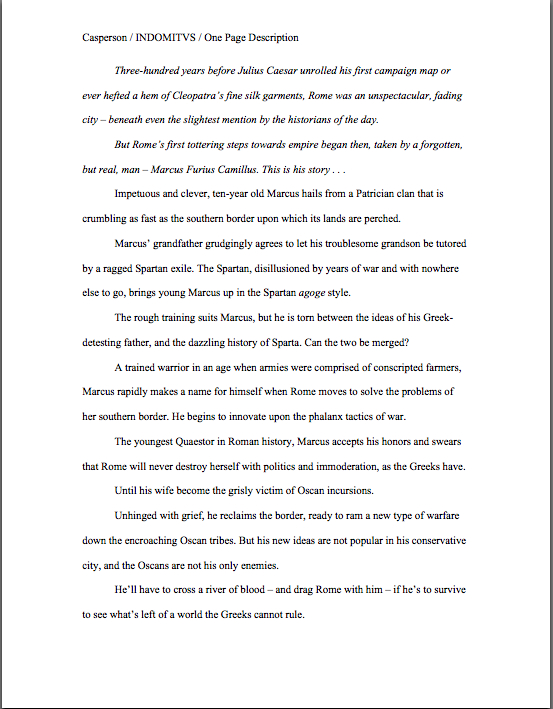




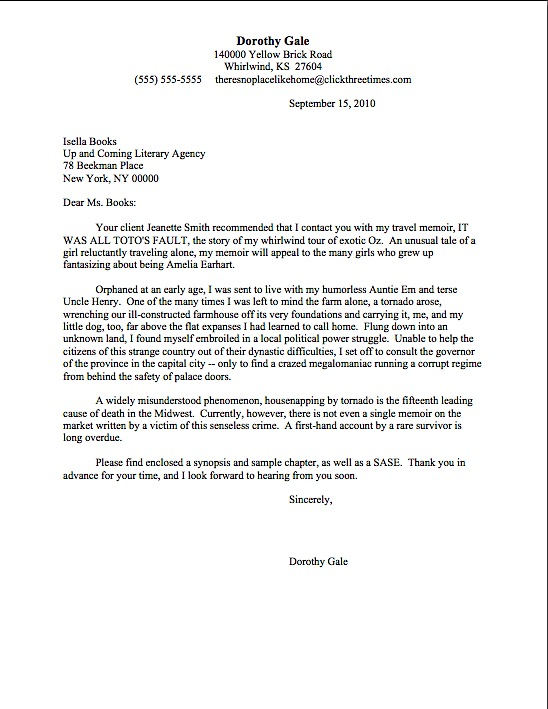
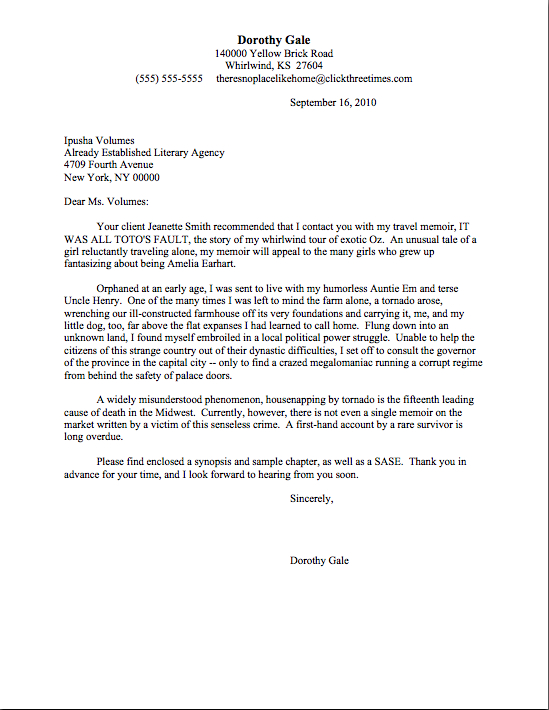



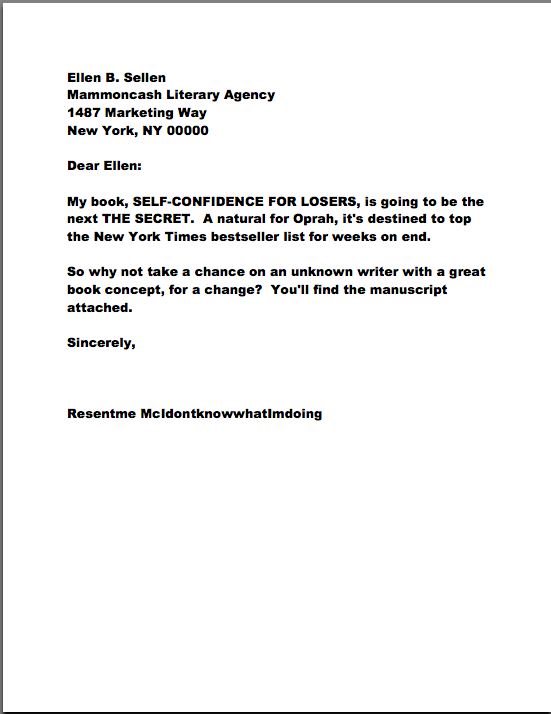
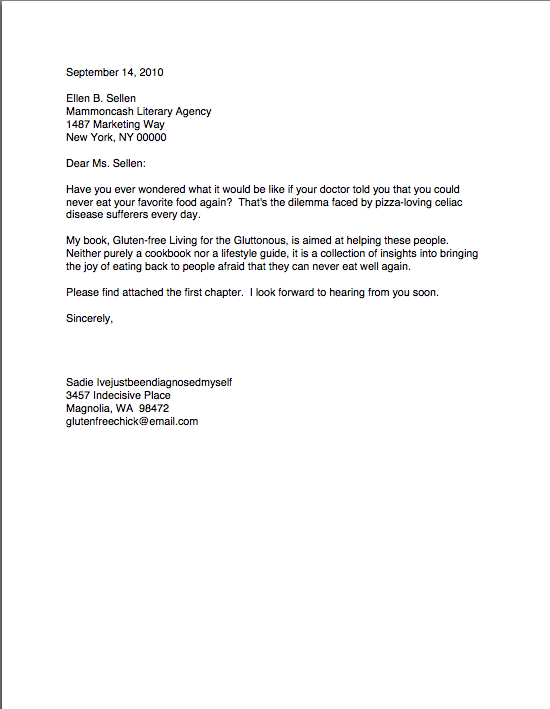
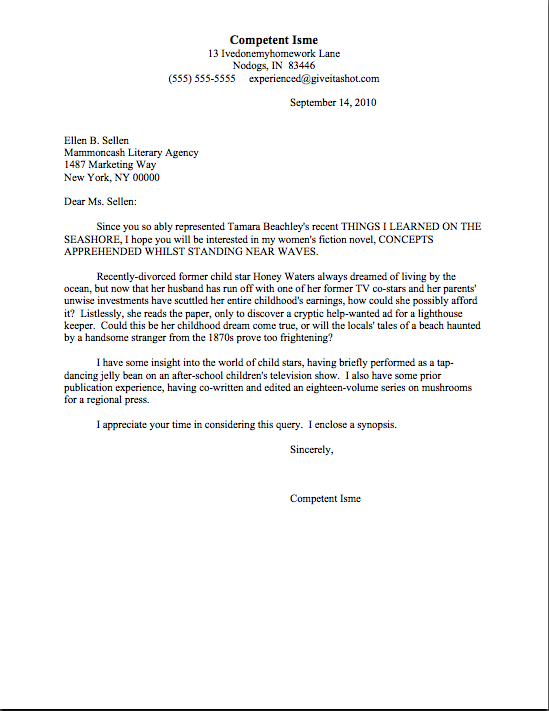
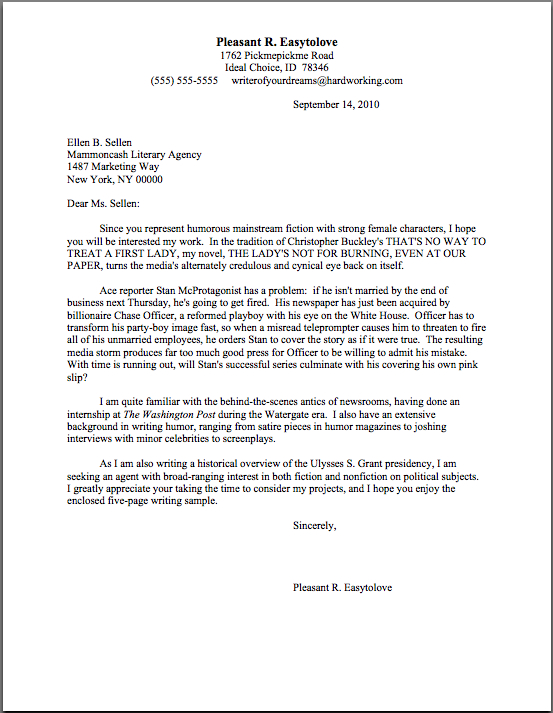

 No matter how many pages or extra materials you were asked to send, do remember to read your submission packet IN ITS ENTIRETY, IN HARD COPY, and OUT LOUD before you seal that envelope. Lest we forget, everything you send to an agency is a writing sample: impeccable grammar, punctuation, and printing, please.
No matter how many pages or extra materials you were asked to send, do remember to read your submission packet IN ITS ENTIRETY, IN HARD COPY, and OUT LOUD before you seal that envelope. Lest we forget, everything you send to an agency is a writing sample: impeccable grammar, punctuation, and printing, please.






